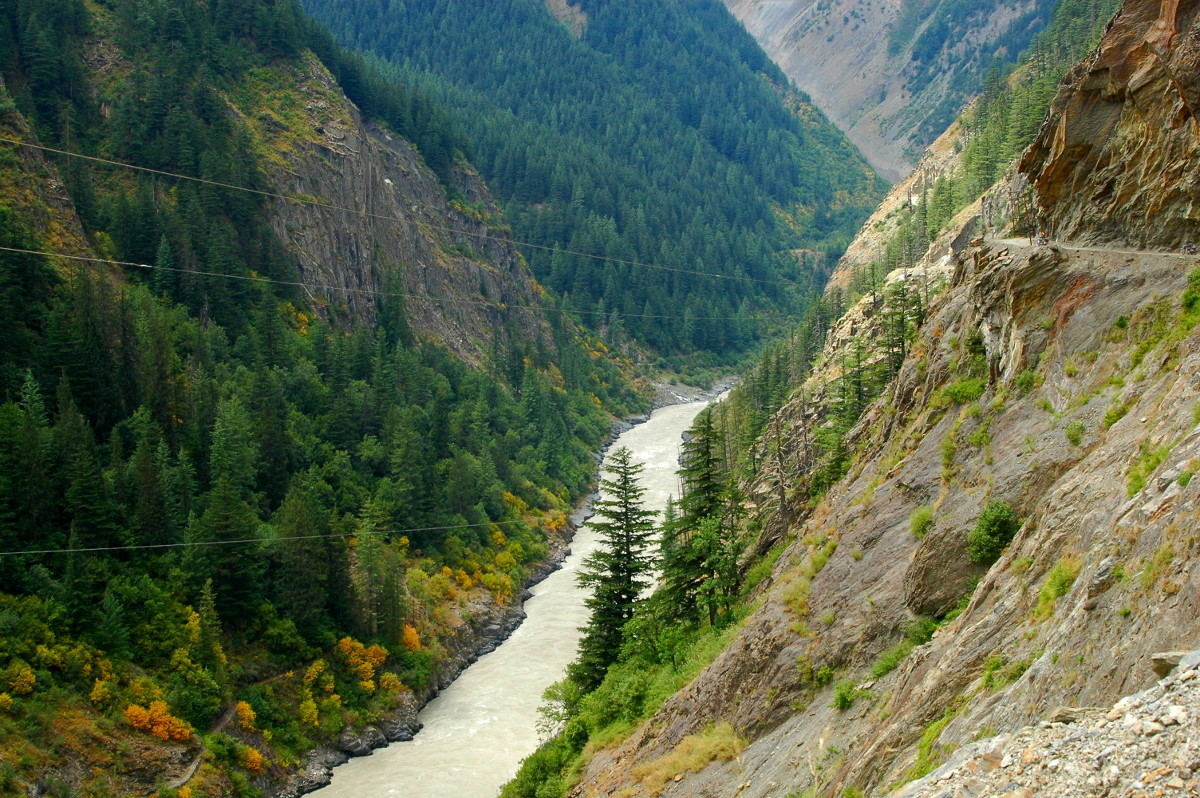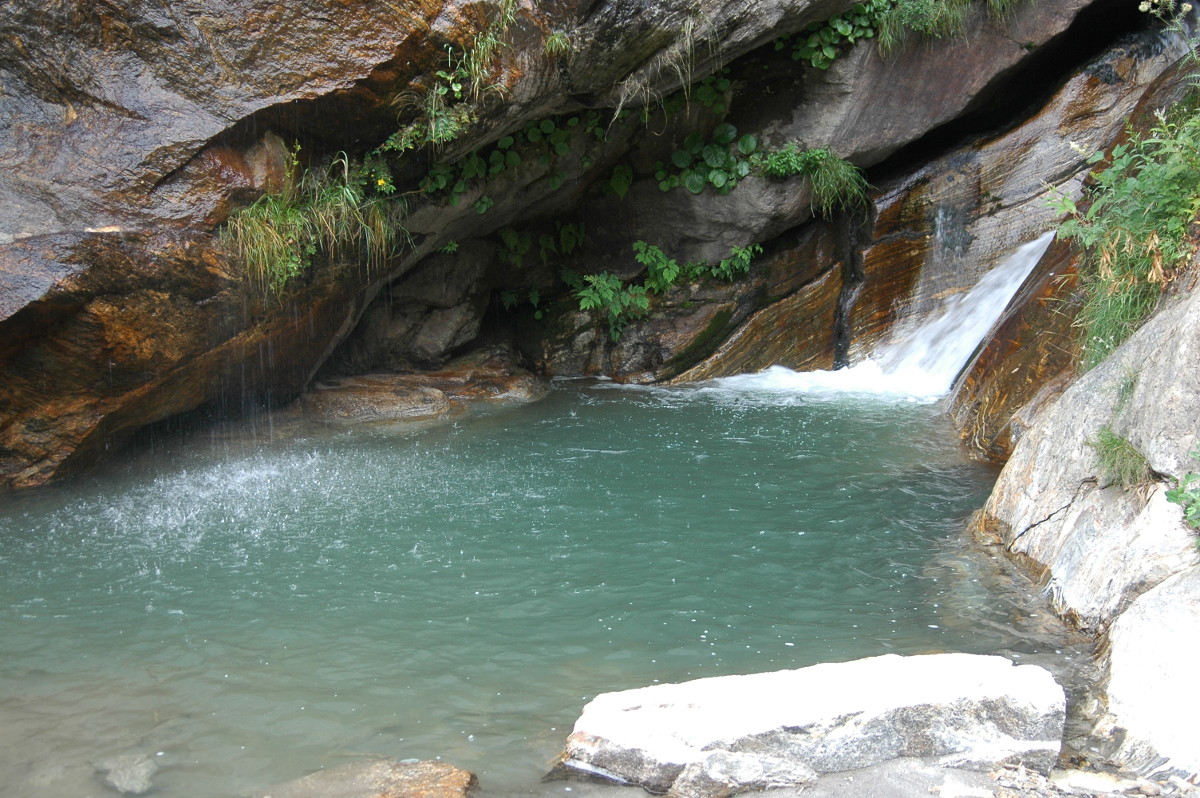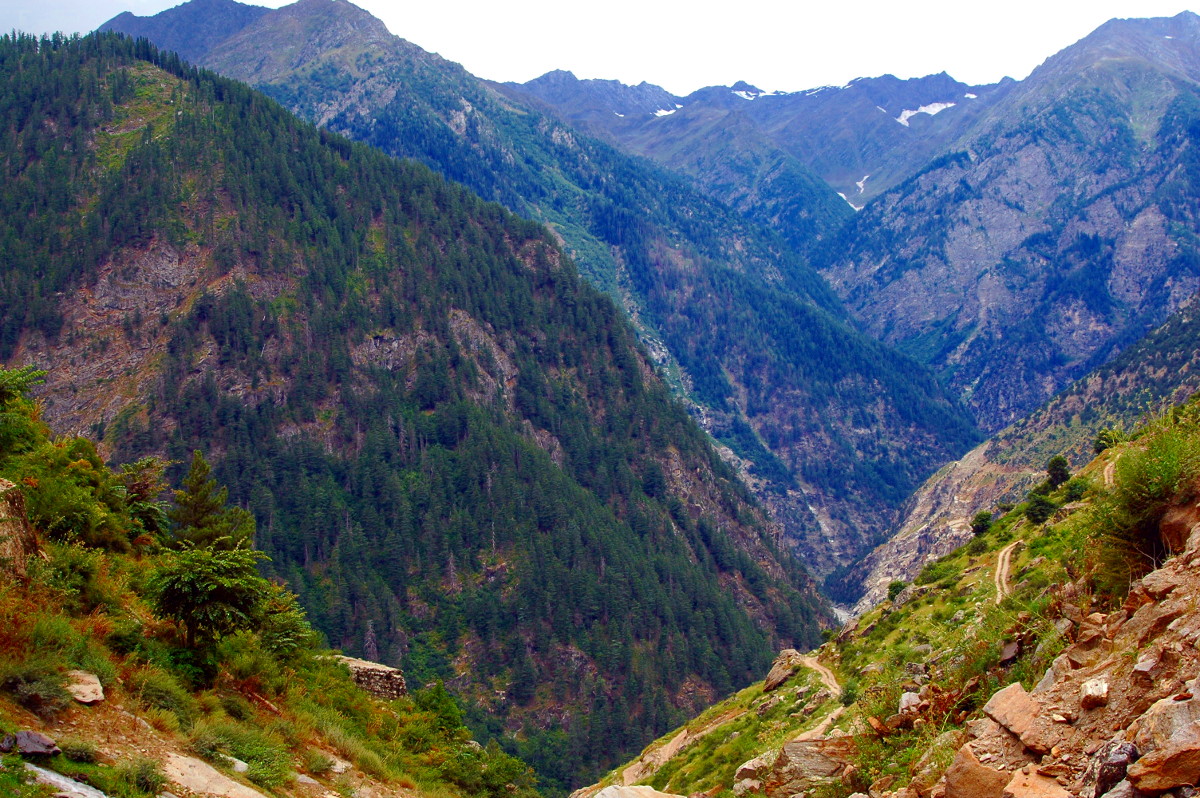To boldly go where no one has gone before
The track further deteriorated to a glorified (meaning, slightly wide) trekking path. We frequently rode through slush and very rocky gravel, sometimes at inclines as high as 45°. The path itself was cut right into a mountain face. About 10 feet from the road surface was the cliff overhang, with a very steep drop on the other side which would have landed us into the Chenab river a 100m below. All the confidence garnered from a month of riding on rough terrain melted away as we gingerly tread this dangerous route.
That said, the scenery was absolutely breathtaking. Thick virgin deciduous forests on either side, deep valley and fast river in between. Not too many photographs, since we had stiff time costraints and a back-breaking ride. Our hearts were all for photography, but the mind and body prevailed.
What’s more, my left bend pipe, which had got cut in Pang, shook loose again under all the vibration. What started as a tiny bit of exhaust leakage slowly kept increasing throughout the day.
The spectacular Pangi valley. The river flowing is the Chenab, one of Punjab’s five main rivers.
For lunch, we stopped at a tiny hamlet of three houses on the border of Himachal and Jammu. By the time we were done eating, the initial population of 3 had swelled to 30, as people poured in to witness bikes doing a road which had hitherto been navigated by 4x4’s alone. As I stepped down to wash my hands, I had this unforgettable conversation with a local:
| He: | To aap kahan kahan hoke yahan pahunche? |
| (So which route did you take to get here?) | |
| Me: | Filhaal hum Jammu-Srinagar se Kargil gaye, phir wahan se Zanskar, Leh, Nubra bhi dekhe, phir Leh se Keylong, aur wahan se Udaipur hoke yahan pahunche. |
| (We rode from Srinagar to Kargil, went to Zanskar & Leh, saw Nubra too, and then from Leh to Keylong. From there we got here through Udaipur) | |
| He: | Aapko yeh militancy ke kaaran kuch dikkat to nahin hua? |
| (Did you face any problems due to militancy?) | |
| Me: | Arre sahib, hume har jagah sirf fauji hi dikhe, militant nahin. |
| (Well, we saw only soldiers everywhere, no militants) | |
| He: | Haan, hamara ladaai to Fauj se hai, aapse thoda hi. |
| (Yeah I’m sure, because our war is with the army and not with you.) |
This left me dumbfounded for a few seconds. Before I could look up he had melted into the crowd.
A small pond in a grotto next to the road.
With about 50kms to go to Gulabgarh, my fuel can carrier broke under the enormous strain. It was sheer luck that it didn’t completely fall apart and distend the entire 20 litres of fuel on the ground below. Fortunately, by now, all our tanks had sufficient space to hold the fuel. We emptied the can into mine, Prashi’s and Chaithra’s tanks. We tied up the can and carrier with a bungee cord, but without the fuel load, it wasn’t too likely to fall apart.
Another view of the valley.
It was twilight when we reached Gulabgarh. For a town which is so cut off from civilization, it seemed very large. Cricket ground, a high school, marketplace, main street, and phone lines. Even a bus service to the next town, though it was just one bus trip a day. It obviously didn’t see too many tourists, since there was just one hotel, and even that was only partly constructed. They hadn’t got around to building toilets yet.



